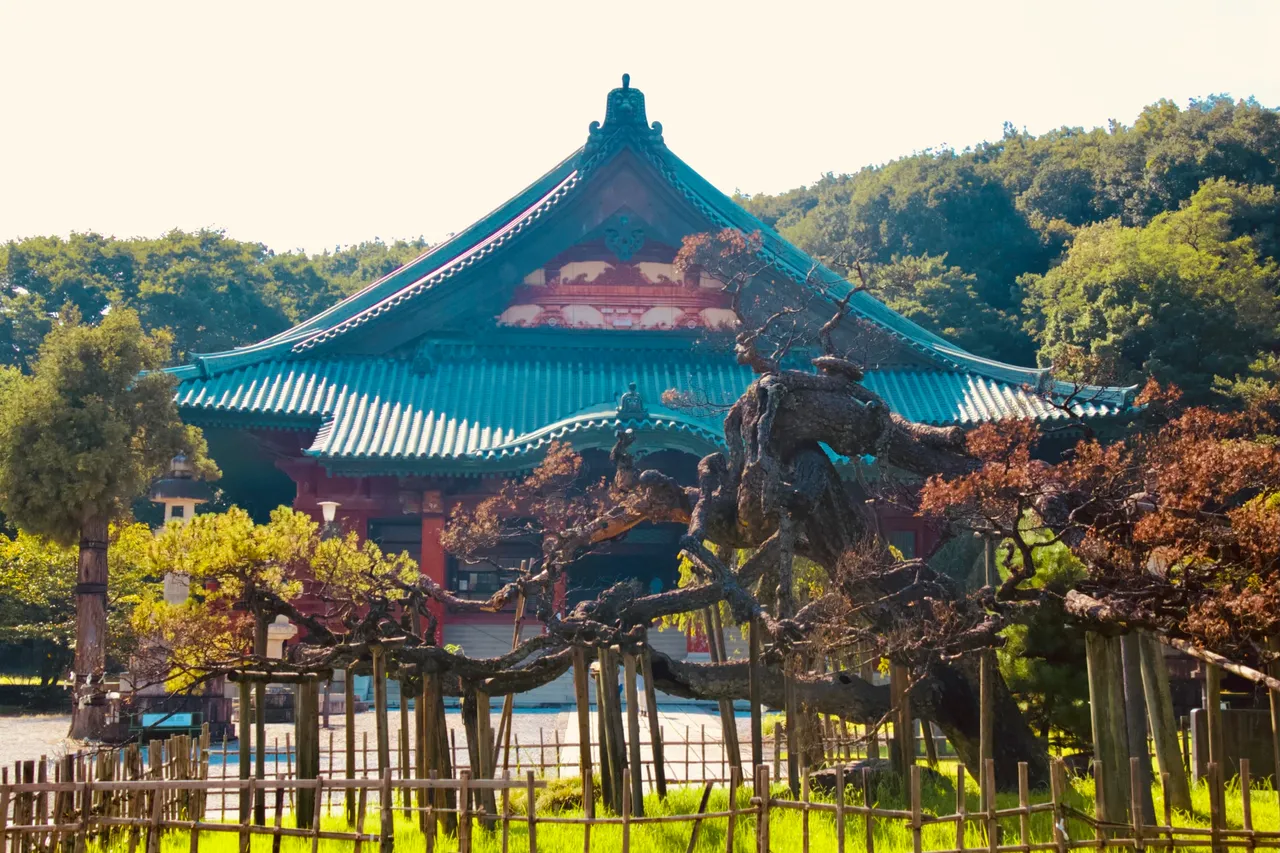
I have taken photos of this temple many times but as the lens of my eyes become more trained and creative, I find pleasure in re-clicking at these historical buildings as if seeing them for the first time. At each session, new details are revealed.
Japanese Buddhist architecture consist of variants originating in China. In the 6th century after Buddhism arrived in Japan via the Three Kingdoms of Korea an effort was made to have a standardized temple representing the faith.
Over time the temples were built to suite Japanese taste and the unique weather conditions such as high humidity in the summer, the rainy season (June 15-July 15) and long cold winters.
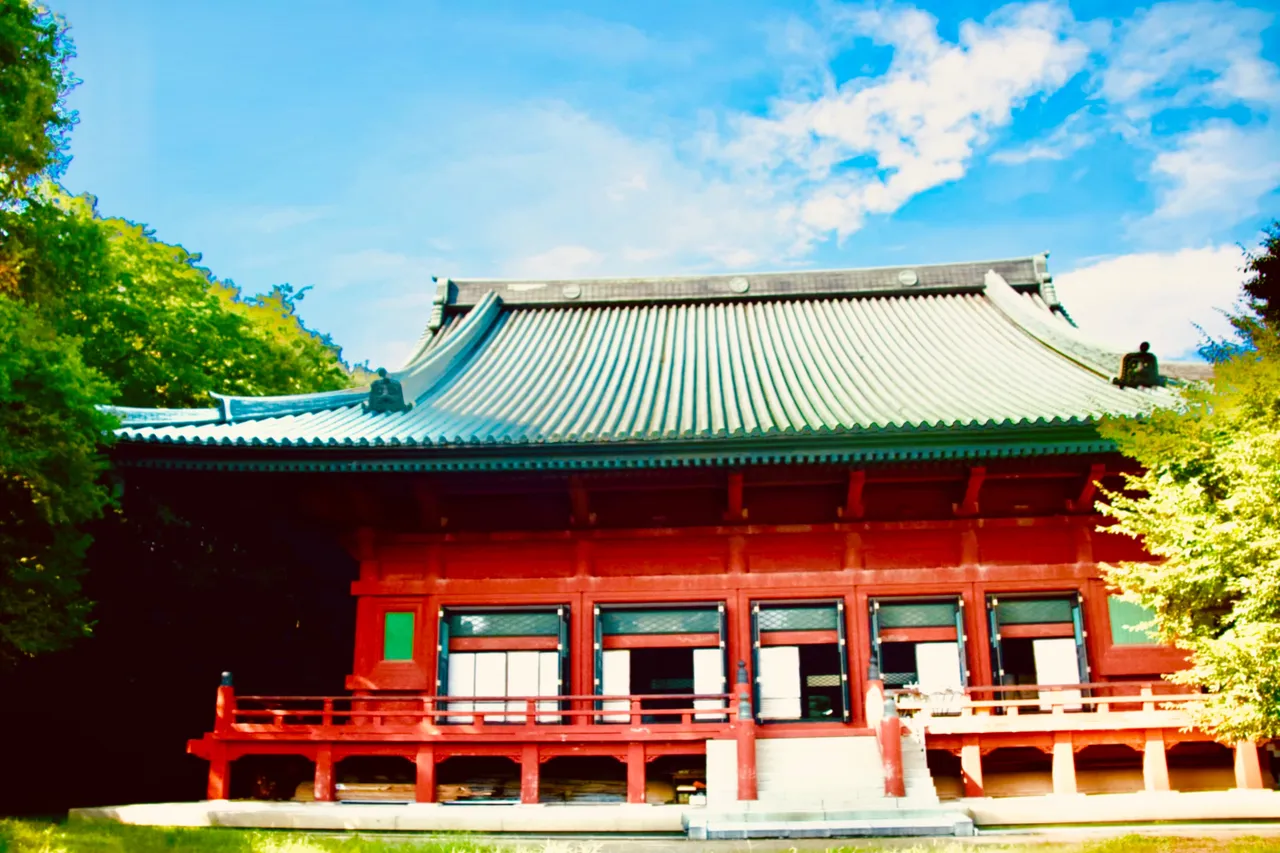
Onigawara -鬼瓦 Demon Tile
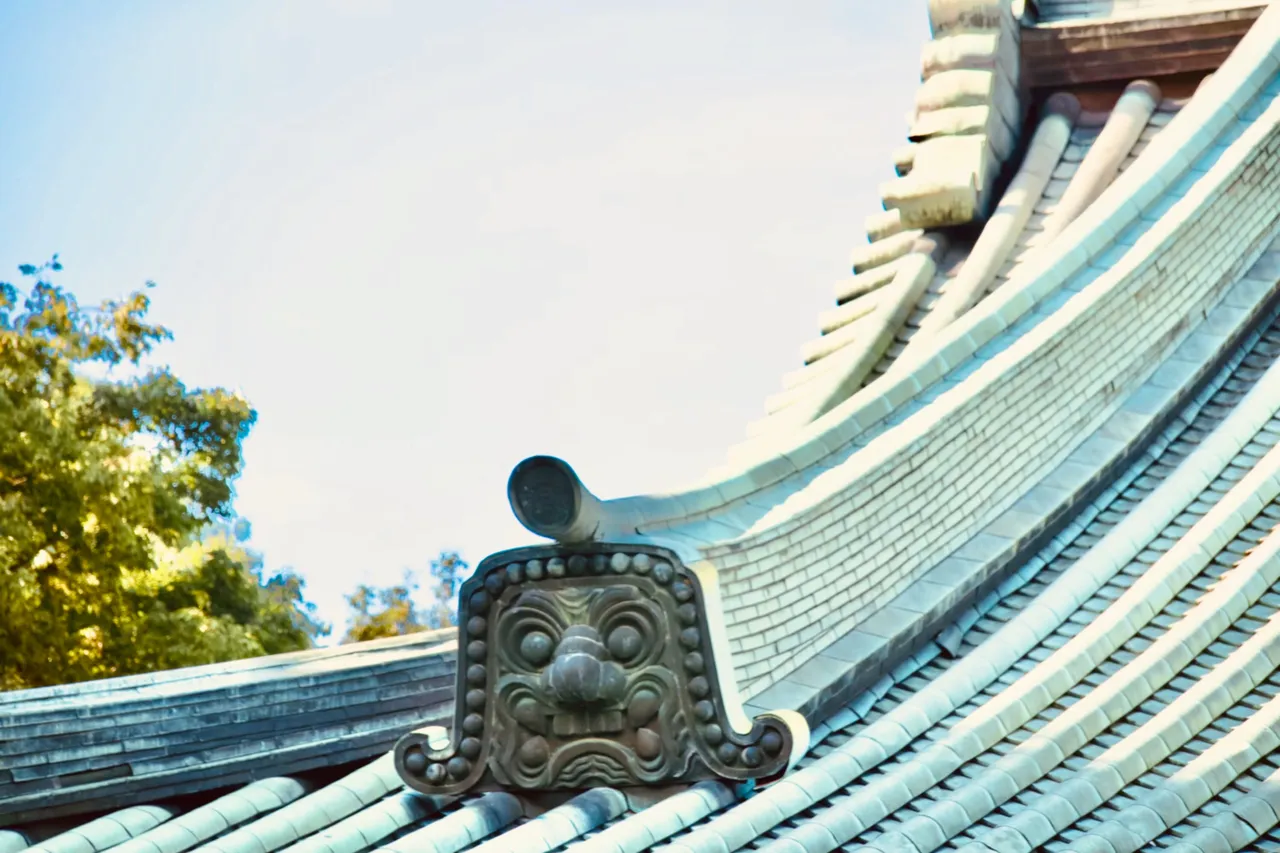
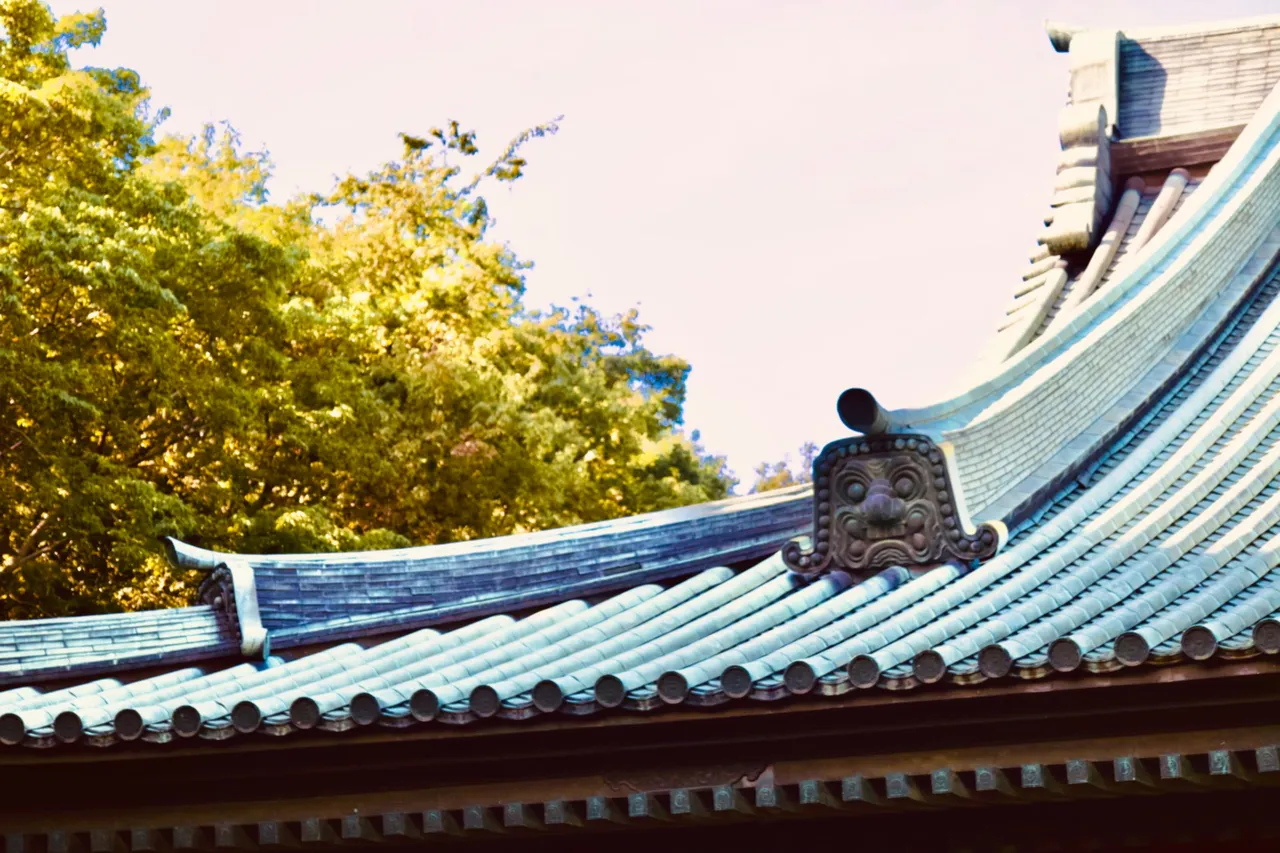
On this smaller building to the right of the temple, we can also see an Onigawara. In the foreground we see a Tōrō which is a lantern. We can see Tōrō of various designs in many places in Japan but of course they are no longer used to light up the night. When you think about it, why the elaborate design for a lantern? I am not sure but by the looks of it, it kept the fire in place, wind proof and away from wooden structures that most temples in Japan are made from. There is probably a more symbolic meaning behind the design but that will take some research for another time.
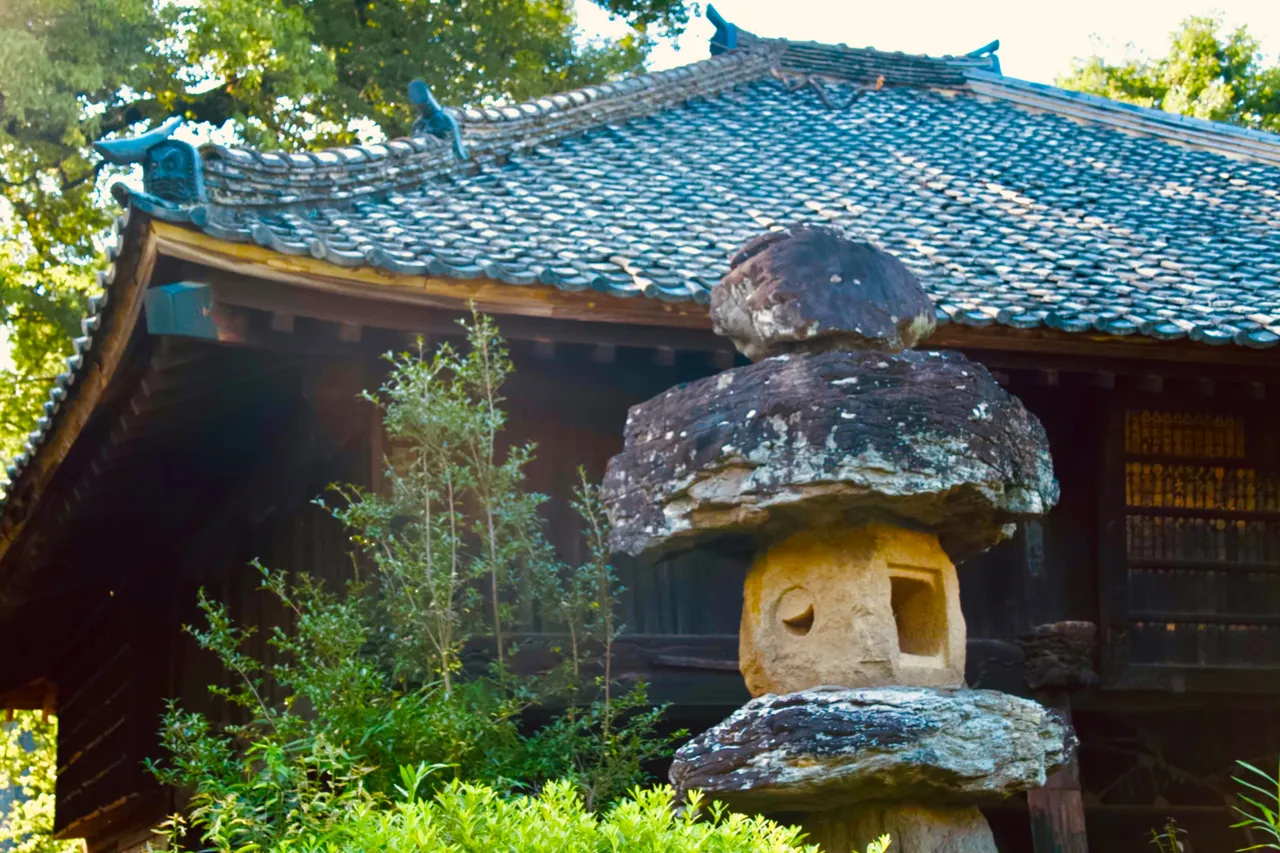
Buddha statue in the garden of the temple. In front of him, a dragon guarding an incense alter. As I took this picture I couldn't help feel a sense of peace and calm and stood for a second to meditate myself.
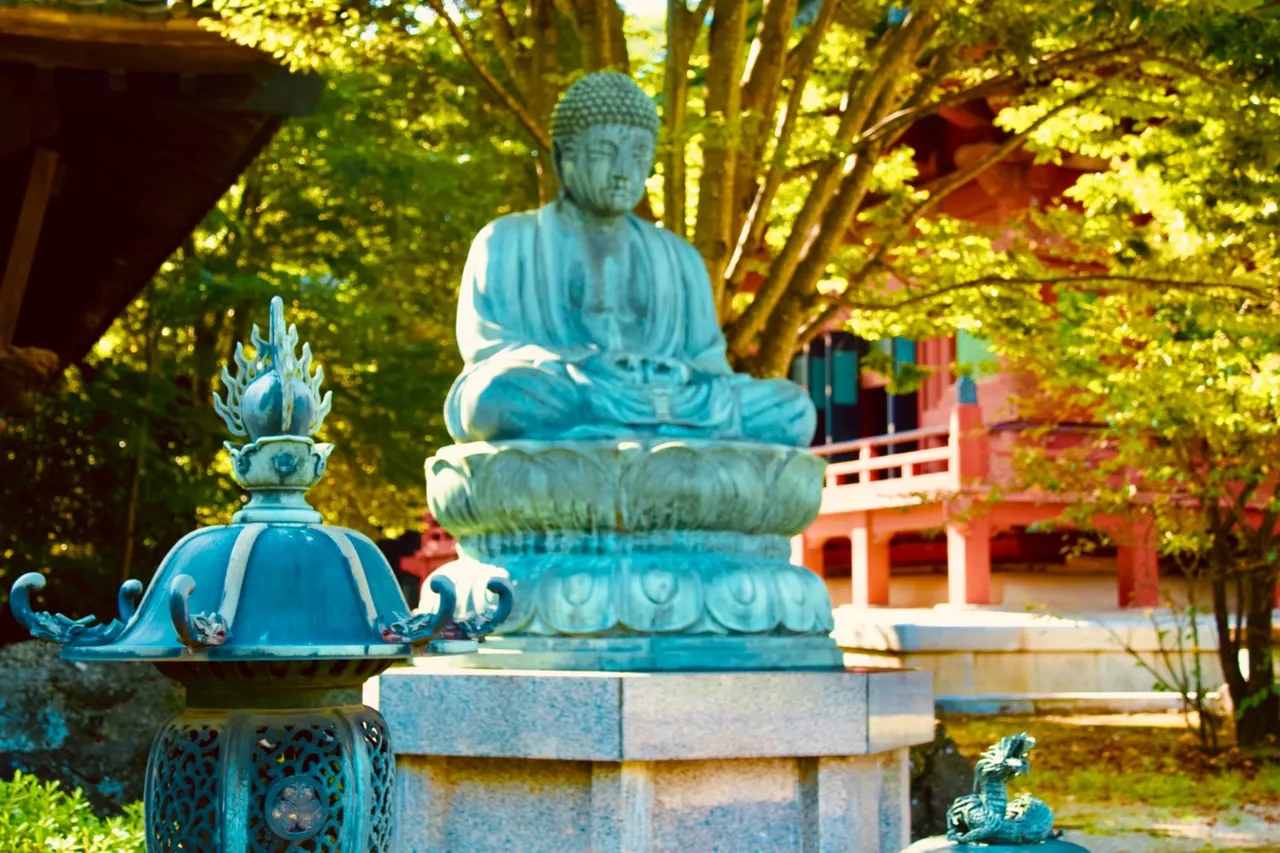
This is called Chōzu-ya or temizu-ya and is used to purify the hands and spirit with water before entering to pray at the shrine or temple.In the background we can see the Buddha statue. On all the buildings, the roof design has that slight distinctive curve.
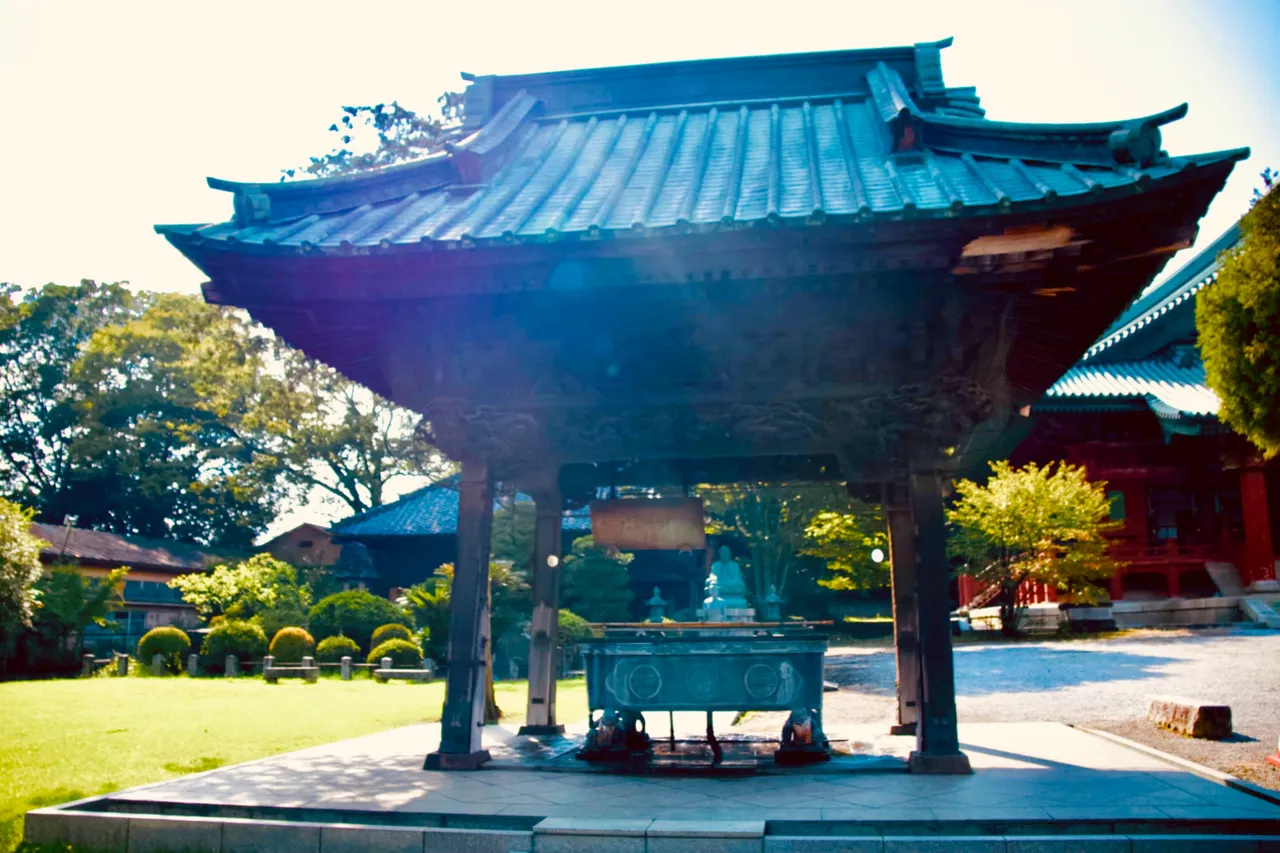
Again, on this bell 🔔 tower in the picture below, we can see the same curve. The bell towers are called Bonshō ( 梵鐘 ) or Buddhist bells, they are also called tsurigane. They are used to summon the monks for prayer, segment periods of time and also used to welcome the new year.
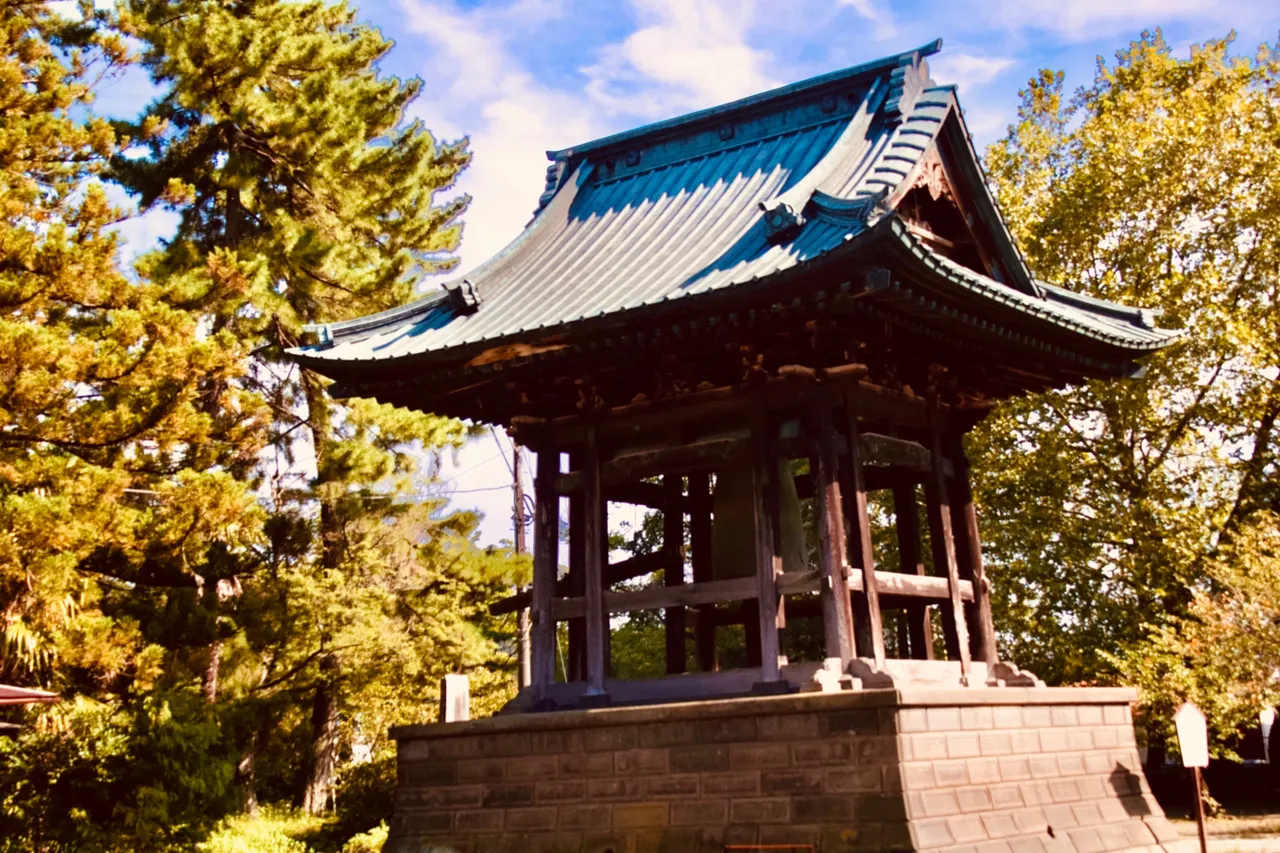
The last picture below is of the underneath of the main temple building’s roof. You can see the symmetry and detail of the work put into it. The roof of the temple is the feature that makes it truly stand out. From the curves, well placed tiles, demon carvings and symmetry, these cultural beauties with long history brings awe to its beholder.
Thank you for reading & hope you enjoyed this journey to the temples.
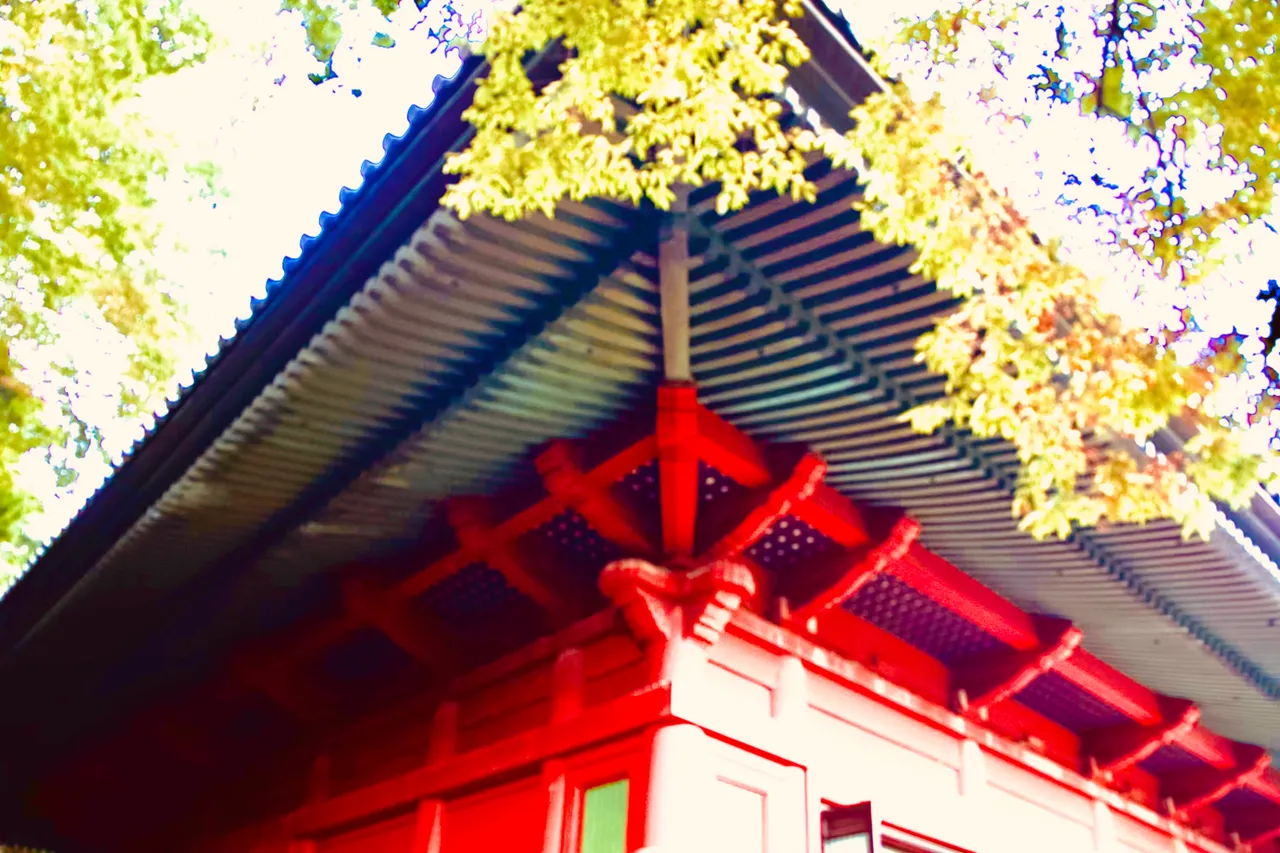
Location: Daikon Buddhist Temple, Gunma, Japan.
Camera: Canon M50
